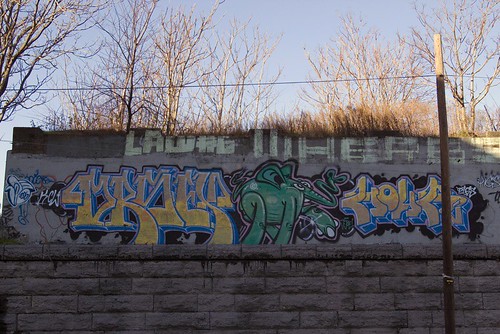* * * * *
I’ve got three core comments on Wikipedia: 1) I’ve been using it happily for years and am, for the most part, satisfied. 2) I think it’s important to note that it covers a much wider range of topics than traditional encyclopedias. 3) If I were teaching, I would probably have graduate students, and perhaps advanced undergraduates as well, involved in editing Wikipedia.
On the first point, Wikipedia is my default reference work on a wide range or topics (though not philosophy, where I first go to the Stanford Encyclopedia of Philosophy). This seems to be the case for many people. Depending on what I’m interested in at the moment I may consult other sources as well, some referenced in a Wikipedia article, others from a general search. I have seen Wikipedia used a source in scholarly publications that have been peer reviewed though I don’t know, off hand, whether or not I’ve done so in any of my publications in the academic literature. But I certainly reference Wikipedia in my blog posts and in the working papers derived from them.
Depending on this and that I may consult the “Talk” page for an article and/or its edit history as well, the former more likely than the latter. For example, I have a particular interest in computational linguistics. Wikipedia has an entry for computational linguistics, but also one for natural language processing (NLP). The last time I checked (several months ago) the “Talk” pages for both articles raised the issue of the relationship between the two articles. Should they in fact be consolidated into one article or is it best to leave them as two? How do we handle the historical relationship between the two? I have no particular opinion on that issue, but I can see that it’s an important issue. Sophisticated users of Wikipedia need to know that such issues exist. Such issues also exist in more traditional reference works, but there’s no way to know about them as there is no way to “look under the hood”, so to speak, to see how the entry came about.
I’ve written one Wikipedia entry from scratch, the one for David G. Hays, the computational linguist. I hesitated about writing the article as I’m a student of his and so can hardly claim to be an unbiased source. But, he was an important figure in the development of the discipline and there was no article about him. So I wrote one. I did that several years ago and so far no one has questioned the article (I haven’t checked it in a month or three). Now maybe that’s an indication that I did a good job, but I figure it’s just as likely an indication that few people are interested in the biography of a dead founder of a rapidly changing technical subject.
I also helped the late Tim Perper on some articles about manga and anime – pervasive in Japanese popular culture and important in the wider world as well. In particular, I’m thinking about the main entry for manga. Tim was an expert on manga, the sort of person you’d want to write the main article. Manga, however, is the kind of topic that attractions legions of enthusiastic fans and, alas, enthusiasm is not an adequate substitute for intellectual sophistication and wide-ranging knowledge and experience. So I got to see a bit of what’s sometimes called “edit wars” in Wikipedia. In this case it was more like edit skirmishes. But it was annoying.
After all, anyone can become an editor at Wikipedia; there’s no a priori test of knowledge. You just create an account and go to work on entries that interest you. An enthusiastic fan can question and countermand the judgement of an expert (like Tim Perper). If editing disputes become bad enough there are mechanisms for adjudicating them, though I don’t know how good they are. For all I know the current entries for, say, Donald Trump and Alexandria Ocasio-Cortez, are current battle grounds. Maybe they’re on lockdown because the fighting over the entries had been so intense. Or maybe everyone with a strong interest in those entries is in agreement. (Ha!)
On the second issue, breadth of coverage, would a traditional encyclopedia have an entry for manga? At this point, mostly likely yes (I don’t really know as I don’t consult traditional reference works any more, except for the Stanford Encyclopedia of Philosophy and the Internet Encyclopedia of Philosophy). But not only does Wikipedia have an entry for manga, but it has entries for various genres of manga, important creators, and important titles. The same for anime. And film. And TV.
At the moment I’m watching “Battlestar Galactica” (the new millennium remake) and “Friday Night Lights”, two very different TV series that are available for streaming. “Galactica” has a large fan base and en extensive set of Wikipedia articles which includes a substantial entry for each episode in the four-year run as well as entries for the series as a whole, an entry that covers the characters, and one that covers the space craft. There may be more entries as well. Judging from Wikipedia entries, the fan base for “Friday Night Lights” is not so large. There is an entry for each season (of four), but not entries for individual episodes. But, just as the entry for the newer version of “Battlestar Galactica” links back to the original series (from the previous millennium), so the entry for “Friday Night Lights” links back to the movie and to the book on which the movie is based.
Beyond this, I note that I watch A LOT of streaming video, both movies and TV. And I frequently consult Wikipedia and other online resources. One observation I have is that plot summaries vary from very good to not very reliable. Writing good plot summaries is not easy. It may not require original thinking, but still, it’s not easy. This is particularly true when you’re dealing with an episode in an ongoing series that follows two or three strands of action. When you write the summary, do you summarize each strand of action in a single ‘lump’ or do you interleave the strands in the say they are presented in the episode? Off hand I’d prefer to see the latter, but I don’t know what I’d think if I actually got that – nor have I kept notes on just how it’s done in case after case after case (I’ve followed 10s of them in the past decade or so).
Which brings me to the third point, if I were still teaching I’d involve students in editing Wikipedia. I know that others have done this, I’m thinking in particular of feminists who are concerned about entries for women, though, alas, I can offer no citations. Still, I’m thinking that writing plot summaries for this that or the other would be a useful thing to do, and something within the capacities of graduate students and advanced undergraduates. Not only could they do it, but doing it would be a good way of teaching them to focus on just what happens in a story. But how would you do it?
For example, I’d like to see plot summaries for each episode of “Friday Night Lights”. What kind of course would provide a rationale for doing that? Obviously a course devoted to the series. Would I want to teach such a course? I don’t know. At the moment I’ve finished watching the first of four seasons; that’s 22 episodes. I find it hard to justify teaching a course, at whatever level, devoted entirely to that series, though I have no trouble imagining a detailed discussion of each episode. But how do you discuss some 80 or 90 episodes of one TV series in a course with, say, 12 to 30 sessions? Does that make any kind of sense at all? And you can repeat the question for any number of TV series, anime series, whatever?
What about the Harry Potter novels, or Stephen King? Of course, one can dismiss these materials as mere popular culture. I’m not sure that is wise.
There’s some kind of opportunity here, but I’m not at all sure of what it is, in detail.





















